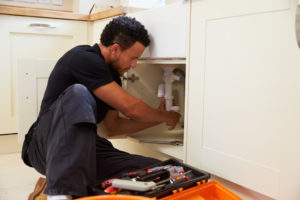With the increasingly violent storms that scientists and climate experts attribute to human-induced climate change, it’s high time now to rethink our own ways of living our daily lives. The truth of the matter is that we’re constantly doing things that ultimately hurt the environment and contribute to the rapidly changing climate patterns across the world.
Today, turning our lifestyle into a more sustainable and earth-friendly path is not a matter of choice but a necessity. The good news is that you don’t need to do radical or drastic things to achieve this; all you must do is to make some small and simple adjustments to your way of life, one day at a time.
Here are six simple ways on how you could make your home a haven for eco-warriors:

Pull off a Marie Kondo
Marie Kondo, the Japanese tidying guru, best-selling book author, and star of Netflix-hit “Tidying Up With Marie Kondo”, professes the value of keeping only the things that we hold dear and removing everything else that is not. Her radical view about the personal organization of valuables took the world by storm and have influenced countless people to follow her lead.
Kondo’s philosophy is so basic, yet highly effective and sensible. By sizing down the material possessions that we have in our homes, we help conserve precious natural and synthetic materials that leave carbon footprints that contribute to global warming and climate change. This doesn’t cost anything but offers our planet, and ourselves, a great deal of favor.
Switch to LEDs
Light bulbs are practically everywhere in any home. If you are to do your part in making the earth more sustainable, switching to LED bulbs is one easy to do it. Bulbs that use light-emitting diodes (LEDs) last longer than traditional halogen and incandescent bulbs, plus LED bulbs consume a lower amount of power. They are the perfect lighting options for those who want to make their homes truly nature-friendly.
Reuse and recycle
Since we have tackled the prospect of reducing material possessions, it’s now time to turn to two other sustainability tricks: recycling and reusing things. An old shirt, for example, can be reused as a cleaning rag while old plumbing pipes can be fashioned into stylish bookcases. There are practically endless ways on how you can recycle and reuse the things that you have lying around in your house. Your imagination and creativity are the only limitations to the things you can do with your otherwise to-be discarded household materials.
Conserve water
Water conservation is a universally accepted way of making any home eco-friendly. The good thing is that there are many simple means of achieving this end goal. You can begin by fixing your plumbing so there won’t be leaks anywhere. You could also invest in a rain harvesting facility so you can reuse rainwater to wash your car or water your plants. Another way is to switch to low-flush toilets or use collected rainwater to flush them out.
Tap an expert to install a stormwater pollution prevention facility or draft an SWPPP
This might be costly at first but hiring an expert to install sediment and erosion control facilities will be worth your investment. Stormwater pollution prevention facilities aim to prevent harmful contaminants from reaching storm drains and polluting potable water sources. They undergo what is called an SWPPP inspection to ensure that they follow everything contained in the stormwater pollution prevention plan (SWPPP). You’ll need an expert in drafting your own SWPPP so it would include custom best management practices (BMPs) that fall under structural BMPs and non-structural BMPs.
Practice home composting
A great many homeowners think that landfills could turn their food waste into organic compost but do you know that this not the case? Landfills are designed to hold trash and not decompose them, which means that the bulk of food wastes that are dumped into them would just form part of the mountains of waste materials that emit toxic fumes and hurt nature.
That said, you should strongly consider practicing home composting very soon. There are tutorials on YouTube that you can watch to learn how easy it is done. You can also source materials like soil and containers from your local stores so all you have to do is learn the process, source the materials, and begin processing your food waste to turn them into organic compost.
Keep in mind that we all have a part to play in making our world sustainable. It would require some degree of work and monetary investments but turning your home into a haven for a sustainable living would be worth your while.














